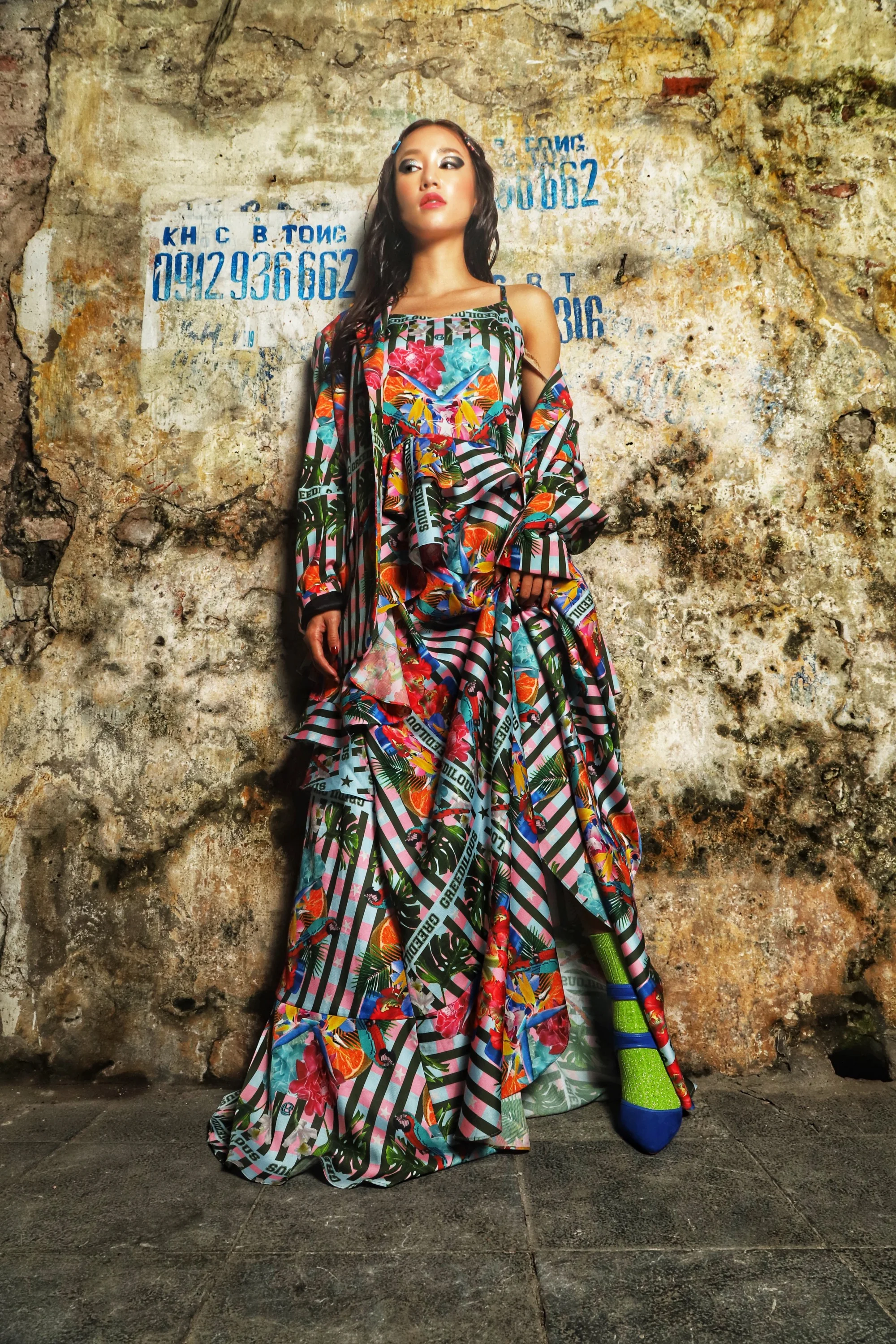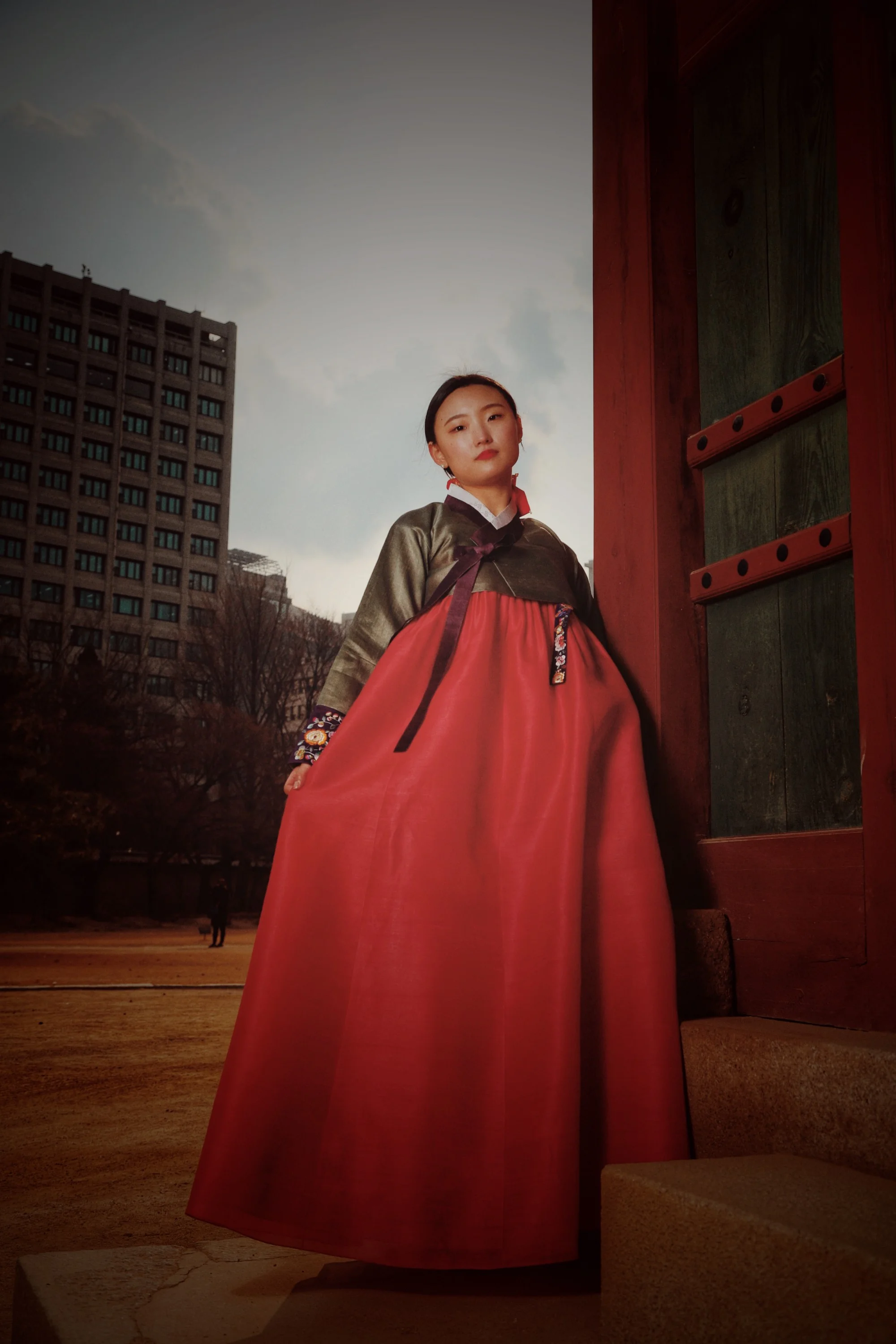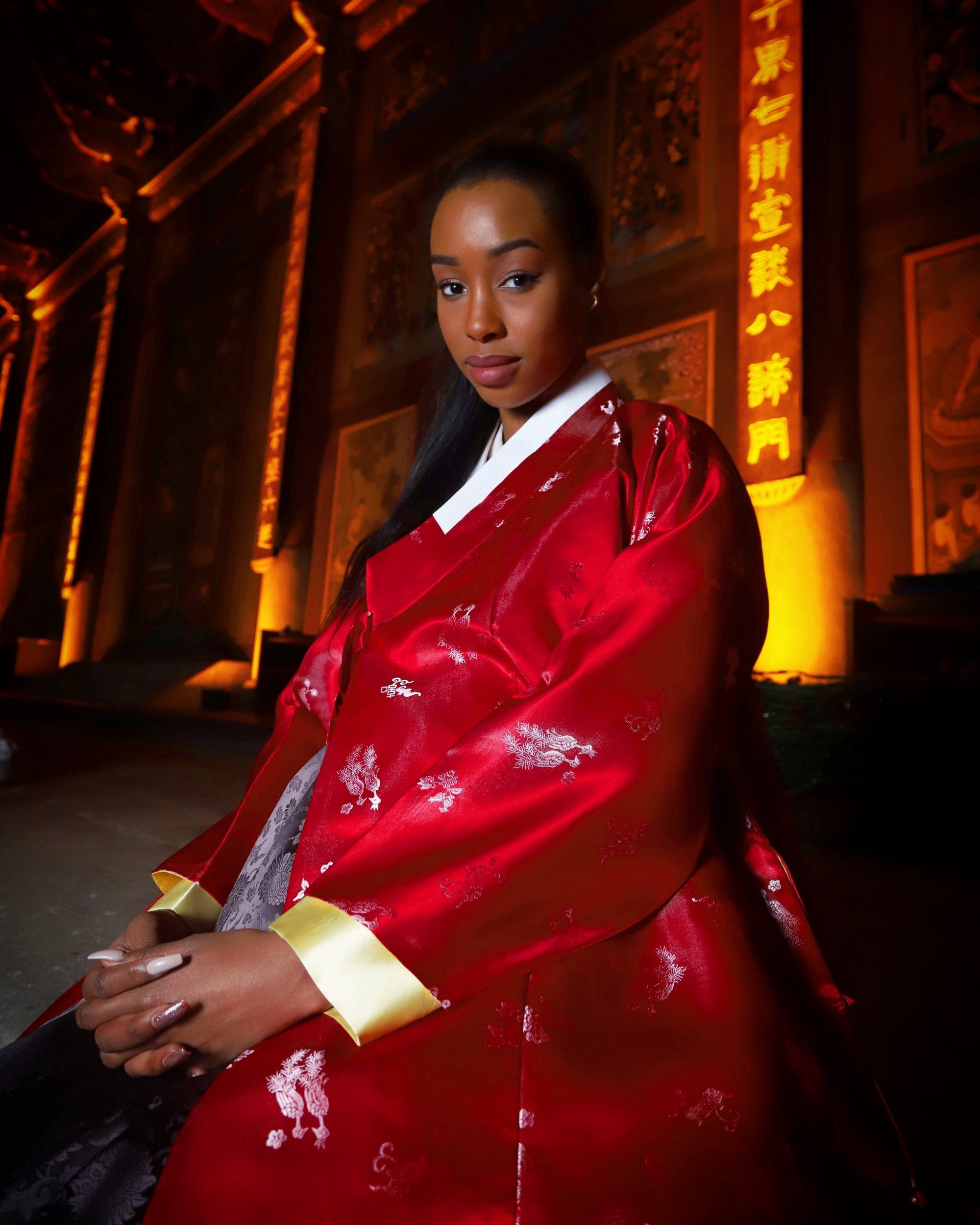Put quite simply, this project hopes to use clothing as a means to foster cross-cultural empathy and understanding between Vietnam and South Korea. It will take national dress as a starting off point and the main focus of aesthetic exchange between the two cultures. Understood as what the other side wears, and as the sartorial symbol of that other side, national dress is the outer shell of appearance that can most easily be worn, shorn or even exchanged. Whether it is the Vietnamese ao dai, the Korean hanbok, or even the more currently trendy street fashion spreading across the globe from the streets and runways of Seoul, national dress is something one can consciously inhabit, and which can allow a direct, empathetically powerful assumption of another point-of-view, another mode of being.
NVSI
The New Việt Nam Studies Initiative based at the University of California at Davis, will quarterback this joint project composed of many parts and players, all working towards the common goal of fostering artistic and scholarly exchange between Vietnam and Korea. The New Việt Nam Studies Initiative brings together scholars, industry experts, government officials, activists, and artists to lend their knowledge of the many dimensions that comprise contemporary Viet Nam. New Việt Nam Studies, or the study of the economic reconstruction and cultural renewal of Viet Nam, will help move this country beyond the major conflicts of its recent history to chart its own course into the future.
Fashion Photography as Methodology
The project will use a method of generating social data by remixing sartorial symbols across national borders. This form of "semio-sartorial elicitation" will foster new mental connections, spark new conversations, and forge new modes of cooperation and collaboration across the imaginary lines that separate us. The picture itself can stand as a meta-text that instantly questions and even erodes old binaries and other lines of separation, creating a visual space for increased social empathy.
Stage 1 - Starting with What We Know
The project will evolve from its DNA, the basic parts it has in place now. Enabled by Professor Caroline Kieu Linh Valverde's NVSI center housed at UC Davis and its recent successful conference it hosted with Danang University in August, American academic Dr. Michael W. Hurt -- South Korea's first street fashion blogger and photographer -- will begin coordinating designers and models on the ground in Seoul and begin preparing the exchange of hanbok and ao dai to take place first in Seoul. By placing carefully selected aoi dai and its accoutrements in the hands of South Korean designers, stylists and models, Dr. Hurt can begin photographing the resulting creations on the Korean side first. Thereafter, the process can be duplicated in Saigon, where Prof. Valverde has an extensive network of connections already in place. As Dr. Hurt -- along with many hanbok and other items of clothing -- moves back and forth across borders and the resulting creations find exposure and mediation through transnational spaces of Instagram, Facebook, and YouTube, many more intellectual, interpersonal, and institutional connections will be made and grow into new ones that will help define the next stage.
Dr. Hurt has been working with notions of traditional dress and national identity for quite some time. As a photographer and visual sociologist, he has always found the hanbok — the traditional clothing work by Korean people — deeply interesting in the sense that as a symbol of Koreanness itself, and as an object worn on the body, it is the object that is most charged with a corporealized Koreanness. And in that sense, it it quite “raced” as an object strongly associated with the markers of that self-same Koreanness. Put more simply, the hanbok is associated with “Korean” faces, Korean bodies, and is a marker of many other things Korean. It is the thing, based on the bodies generally seen to inhabit it — or seen as OK to inhabit it — that help define what and who the proper Korean body even is in the bigger picture. This photography/fashion project is part of an attempt to question interrupt both a) who gets to embody the hanbok, and b) what a hanbok even is. Put even more simply, it’s a visual/aesthetic remix of the hanbok and all it denotes. The idea in that project was to visually (read, semiotically) the dominant notion of what it means to be Korean by switching elements that are generally implied to always be together -- the traditional notion of the Korean body and the hanbok.
Here's the visual argument in a nutshell:
The standard iteration of Korean raced body and hanbok is well expressed in the Deoksu Palace with model Kang Ah-Hyeong.
Extremely traditional hanbok meets professional Libyan model Sarah Shusan.
The highly colorful and non-traditionally Korean pattern made for a more aesthetically tight visual match with the more West African features of Parisian-of Senegalese-descent singer-model Fama Ndiaye.
African-American professional model Keena Wilson models a gaeryang hanbok ("modern hanbok") that is more western and matches her more western, modelesque features.
Finally, Swedish professional model Miranda Alvenkrona offers another take on a hanbok matched for her skin tone and environment, joined together by a strobe focused through a circlular "beauty dish" reflector in a traditional, 1980s-era coffee shop/cafe (dabang).
All of these photographs remix familiar racial and ethnic markers -- written on both clothes and skin -- in order to place their individual cultural valences and meanings into sharper relief. The method and means of argument are largely aesthetic and artistic within the single pictures themselves, but the greater meanings are quite socially important when taken as part of a larger social canvas and statement.
The Saigon-Seoul Street Studio Project will similiarly allow for the aethetic/visual remixing of tradition/national symbols -- namely, the hanbok and ao dai. Yet, although the projects are similar in approach and methodology, the pictorial results of the 4S Project will also take on different meanings in that the content will be different. Put more simply, the approach of remixing worn objects of Tradition and linking them to the environmental context in the picture will be similar, but the results will be different for two reasons:
1) It's all about the environments.
The environments will be different -- placing Vietnamese ao dai and its parts into a look made by a Korean and on a Korean body in a Korean space will place the ao dai into sharp semoitic, visual, and cultural relief.But in the end, the pictures that constitute this project will be about Vietnam and Korea as places, cultures, and their sartorial symbols. This project is "just about clothes" in only a superficial sense. Both the terms ("Saigon" and "Seoul") and the clothing (ao dai and hanbok) are metonymic symbols for Vietnam and Korea in the larger sense.
2) This is a multi-tiered conversation.
This will be a conversation between Vietnam and South Korea, two nations with parallel but strikingly different backgrounds in terms of national division and ideology on the one hand, and huge similarities on the other, especially in terms of imagining Tradition in the face of dizzingly fast, "compressed development" and new lifestyles of consumption. It will also be an fascinating conversation between models, stylists, and photographer(s) as the interpretations of the Traditional pieces are done by models, stylists, and photographers in the mediated space of Instagram as an intitial place (and mode) of exhibition, even as observer/participants comment upon, share, criticize, and mold the project's direction.
Whether it is ao dai and its constituent parts on bodies in Seoul, or Vietnamese fashion figures getting Seoulish in Korea, the next stage of the exchange will focus more closely on the ao dai and will constitute the first sartorial interchange and encounter between the two sides, and will begin in Seoul, where it is more logistically feasible to start producing collaborations.
This Vietnamese model won the Vietnamese version of The Face and is he's rocking a traditional Vietnamese woven-style dress. Traditional textiles and techniques extended past the ao dai, too. It's is fascinating to see this sartorial conversation being had at Seoul Fashion Week and to find out that Vietnamese fashion figures regularly make the rounds here. Even in Seoul, I was able to learn something about VIetnamese fashion culture. It is an interaction that is partially responsible for inspiring this project in the first place.
Here, it was fun to see the stockings over the pumps mixed into a look anchored by a dress highlighting tradition Vietnamese weaving techniques. A truly inspiring look, indeed.
Another Vietnamese celebrity poses in a glasses frames being hawked around the Dongdaemun Design Plaza at Seoul Fashion Week. She sported them better than anyone else that day.
As we take ao dai and distribute them to real models, stylists, and designers in Seoul, the true semio-sartorial remixing will begin on a level hitherto unseen between the two countries, allowing a view of Vietnamese and Korean fashion codes that will be looked at in new lights, from fresh angles, and in ways that may reveal startling new insights about the unique peculiarities and points of commonality between the two peninulas.
The end goal of this project is the new and unforeseen connections made by placing pieces of national dress on differently-nationalized bodies within spaces imbued with national meanings. The wild card variable here that will reconfigure the relationships between national bodies, spaces, and dress will be the body, since this is what brings all the elements together and which give the inanimate objects in the equation real, social meaning.
While placing a hanbok in front of the very symbol of the Vietnamese nation may be a bit too on-the-nose, this is just the beginning of our semio-sartorial experiment.
Korean high fashion (and street fashion) designers are now strongly defining the national brand of Korea into a new national dresss. Here, the South Korean brand GREEDILOUS pops out starkly against the muted colors and richly textured backdrop of a Vietnamese wall in the Old Quarter of Hanoi.
This is where Korean fashion hits the road in old Hanoi.
As we take ao dai and other forms of national dress and distribute them to real models, stylists, and designers in Seoul, the true semio-sartorial remixing will begin on a level hitherto unseen between the two countries, allowing a view of Vietnamese and Korean fashion codes that will be looked at in new lights, from fresh angles, and in ways that may reveal startling new insights about the unique peculiarities and points of commonality between the two peninsulas.
A Korean model stands in front of the Dongdaemun Design Plaza in the heart of Seoul’s fashion district during Seoul Fashion Week in March, 2019. The model is wearing a modern take on the ao dai from La Pham Design Studio from Hanoi. The digital façade of the APM building changes colors and cycles through all the colors of the rainbow but here syncs perfectly with the ruddy violet of the ao dai.
Our Korean model wears an ao dai from Le Lam Studio Hanoi in front of a traditional Korean door of a traditional structure in the Insadong area of Seoul.



















